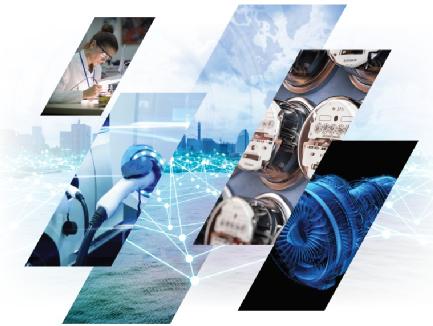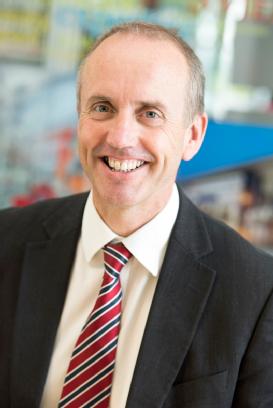WMG News
WMG joins the Electric Revolution challenge
 WMG is proud to be playing its part in the government’s Driving the Electric Revolution challenge.
WMG is proud to be playing its part in the government’s Driving the Electric Revolution challenge.
Fourteen winning projects, announced by the Business Secretary in March, will share a total of £6.7 million. These projects will help boost supply chain efficiencies in industries affected by electrification, from aerospace to automotive, to energy and rail.
Transport Minister Rachel Maclean said:
“Funding and increased support for state-of-the-art electric manufacturing centres will help people, goods and services move across the nation, in a greener, safer and more reliable way than ever before.
By investing in world-leading science and engineering institutions, we are creating a modern transport system, bringing communities closer together while reducing the UK’s contribution to climate change.”
Co-ordinated by WMG Centre High Value Manufacturing Catapult, WMG at the University of Warwick, will be part of the project consortiums for High Volume E-Machine Stack Manufacture and Lightweight Aluminium Winding (LAW).
High Volume E-Machine Stack Manufacture
This project brings WMG together with Brandauer, and Jaguar Land Rover to improve the production methods, tooling design, processes and material selection used in the creation of rotor and stator components to pave the way to a high volume production of thinner laminations in the UK.
Given the rise of electric vehicles and more electrified systems it is strategically desirable for the UK to develop its own supply chain for the production and distribution of high-performance electric machines at volume. This project seeks to close the gap in UK-based supply of rotor and stator lamination stacks.
Brandauer is already established as a market leader in high precision stampings and pressings in multiple sectors but does not currently have the capability to meet the demand of the automotive sector. This will create the opportunity for Brandauer to not just enter the automotive supply chain, but to do so as best-in-class.
Lightweight Aluminium Winding (LAW)
A consortium, led by Aspire Engineering, with WMG, Voltalogic, Ashwoods Automotive, Hydro Aluminium Rolled Products will develop a winding machine for aluminium wires. The winding machine will provide the first UK supply chain solution for manufacturing aluminium coils. Coil winding is a critical component of eMachine manufacture and is not provided by any UK manufacturer. UK based companies of eMachines have to purchase winding machines from overseas suppliers or have wound coils shipped to them.
Ashwoods and Voltalogic will provide copper coil designs that will be redesigned to use aluminium wire. Hydro Aluminium Rolled Products will provide coated aluminium wire with the preferred electrical conductivity and mechanical properties. Aspire will build their work on winding machines to provide a volume manufacturing solution, and WMG will leverage their development work on volume e-Machine manufacture to guide the partners to the provision of a volume manufacturing solution.
The successful completion of the project will provide a UK supply chain for the manufacture of e-Machine coil winding. Through this, it will enhance the UK's competitiveness to deliver e-Machine manufacturing technology. It will embed the design and manufacturing expertise for coil winding into the UK supply chain.
The project will develop the reduction in weight of e-Machines by 15% without compromising performance by developing manufacturing processes for winding coils from alternative material.
It will also deliver, for the first time, to the off-highway market a single source drive system incorporating advanced IPM motor technology, radically lighter BUT equally as efficient as current IPM technology.
Find out more about WMG’s Transport Electrification and Energy research here.
About the DER Challenge
The DER Challenge has an overall investment from the government of £80 million, which is broken down into various schemes.
£30 million will be used to create four new, cutting-edge centres of excellence – based in Newport, Nottingham, Glasgow and Sunderland – which will bring together the UK’s combined expertise to develop and industrialise power electronics, machines and drives (PEMD) technologies that are essential to deliver the electric revolution.
More than 30 partner research and technology organisations will be part of the industrialisation centres. The network is headed up by Newcastle University, along with 21 other universities from around the UK, and 13 research and technology organisations, including the Compound Semiconductor Applications Catapult (CSAC), Offshore Renewable Energy Catapult (OREC), and all seven of the High Value Manufacturing Catapult (HVMC) centres. This ambitious programme is essential to enable the UK to build on existing manufacturing capability and attract foreign direct investment, as well as new, innovative entrants into this space.
Using state-of-the-art equipment, the network will specialise in researching and developing technologies to electrify transport. Each Centre will propel UK manufacturing to the forefront of global efforts to tackle climate change and ensure the UK can reach net zero emissions by 2050. This investment will have applications for electric vehicles, as well as other industries including rail, marine, aerospace and energy – all with the aim of switching away from fossil fuel technologies.
A cross-Catapult (HVMC, CSAC and OREC) Steering Group has been in place for over a year, chaired by WMG at the University of Warwick, and aimed at co-ordinating Catapult efforts in support of DER. For example, we have mapped out the national Catapult capability in equipment, facilities, resources and expertise, training and education in PEMD technologies to assist in signposting the Catapult capability to industrial partners.
 Archie MacPherson, CEO of the WMG centre HVM Catapult, said: “Accelerating the industrialisation of PEMD technologies, in order to build on the UK’s acknowledged expertise, is vital if we are to grow a leadership position as the world electrifies its transport and industrial sectors.
Archie MacPherson, CEO of the WMG centre HVM Catapult, said: “Accelerating the industrialisation of PEMD technologies, in order to build on the UK’s acknowledged expertise, is vital if we are to grow a leadership position as the world electrifies its transport and industrial sectors.
“We are delighted to be leading for the HVMC on the electrification of transport. The DER centres programme is an excellent example of how the HVMC centres across the country, together with our other Catapult partners in CSAC and OREC, can bring their combined capability together to accelerate the development of PEMD technologies in the UK. We are also delighted to be co-ordinating the DER Centre programme on behalf of our Midlands partner organisations, stretching from Manchester to Southampton, and are looking forward to working within the national consortium to deliver efficiently and effectively for the UK as a whole.”
